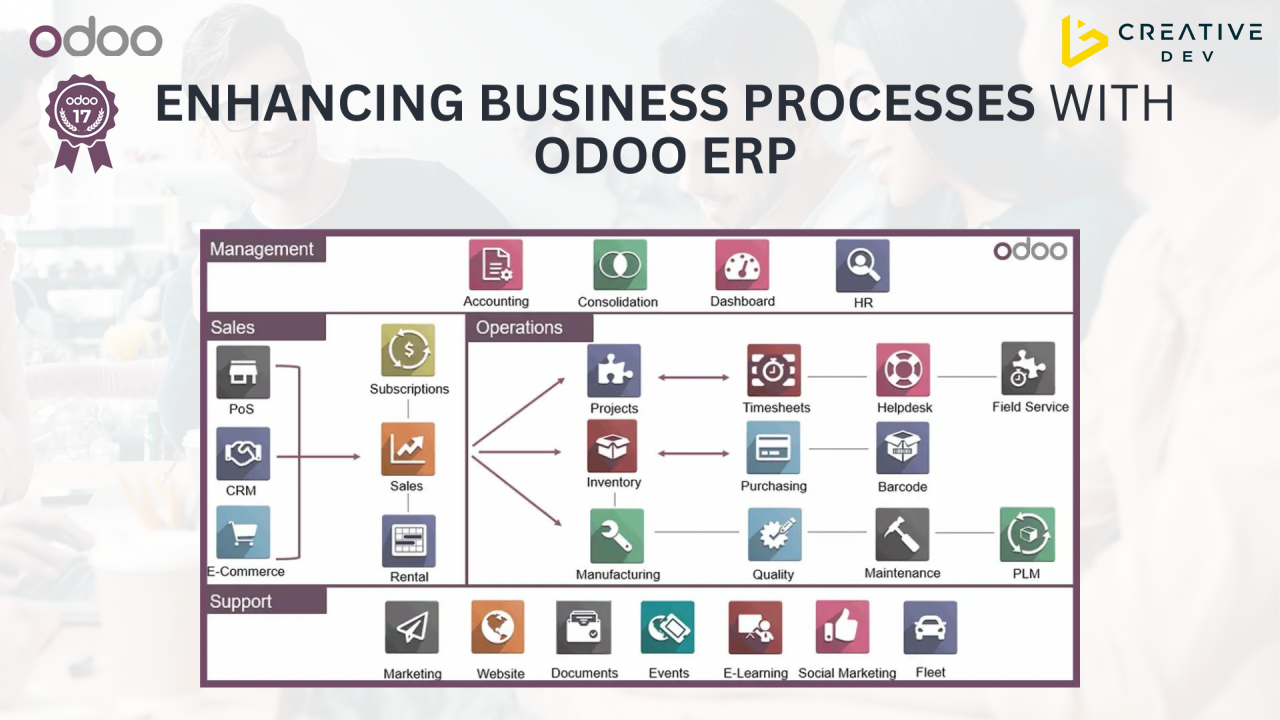Paraphrasing the words of Shakespeare, manufacturers often ponder the question: “To produce, or not to produce?”
Materials are a critical part of manufacturing. However, managing appropriate inventory levels to meet consumer demand can be challenging. Without sufficient quantities of materials, your company may not be able to keep up with demand. Conversely, always keeping an excess of materials on hand is costly and inefficient. Material Requirements Planning (MRP) helps address both of these problems by organizing inventory levels and planning manufacturing activities to ensure that your company can deliver products on time without the risk of holding on to too much inventory.
What is MRP?
Material Requirements Planning (MRP) is a system that manages inventory, plans production, and schedules deliveries to fulfill customer orders.
The MRP process follows three main steps:
- Monitor current levels of raw materials and components on hand
- Identify when materials need to be replenished in order to meet inventory requirements
- Schedule material purchases and manufacturing activities
In a broad sense, MRP factors in both external demand and internal production capacity in order to keep operations running smoothly, and not be bogged down by problems surrounding material availability, machine servicing or malfunctions, or similar causes that may lead to delayed lead times. By focusing on continuous output to, from, and inside the manufacturing process, an MRP system is a valuable tool that improves overall efficiency by cutting costs and delivering products on schedule.
How does MRP work?
MRP uses an essential list of input data from the Master Production Schedule (MPS), Bill of Materials (BoM), and inventory records to answer three main questions:
- What items are needed?
- How many items are needed?
- When are those items needed?
Once a manufacturer enters the essential input data, the MRP analyzes it to determine the materials assembly processes necessary to produce orders on time.
MRP Inputs
MRP depends on essential input data, including:
Master Production Schedule (MPS): A centralized plan that shows what products need to be manufactured, how many, and when. It provides a general overview of a company’s manufacturing scope within a given time period based on forecasted demand and existing sales data from previous periods.
Bill of Materials (BoM): A comprehensive list of all the raw materials, components, subassemblies, and steps necessary to produce one unit of each finished product. The BoM’s information determines how many components are needed to produce the desired number of finished products.
Inventory Records: The real-time status of all items in inventory, including raw materials and finished items on hand or on order.

MRP Outputs
Input data is processed through the MRP system to generate output data. Together, they act as a feedback loop to keep manufacturing operations running smoothly.
Using the input data, MRP generates the following documents to execute the production plan:
Purchase Orders (PO): Product, component, and material purchases are needed to ensure there are enough materials to continue production without being limited by material availability. The PO is a type of procurement document sent to the vendor describing the types, quantities, and prices of materials requested for purchase.
Manufacturing Orders (MO): Also known as a Production Order, this document authorizes the production of a specified quantity of product within a scheduled timeframe. MOs allow things to actually get made and draw information from the BoM to calculate the components and operational details needed to complete the order.
Work Orders (WO): Work Orders describe the specific tasks required to manufacture an item and are deployed to workers on the shop floor. Work Orders also often contain information on where production should occur, the associated costs, and the expected duration of manufacturing activities.
Reports: MRP generates a wide variety of reports on inventory status, planned future orders, performance control, and notices of any planning changes. These reports provide useful information for assessing progress and making data-driven strategic decisions for the business.
MRP as a "chaos crushing" holistic system
In the similar (but slightly different) field of computer science, small numerical differences in the quantities of inputs and outputs create chaos functions. Probably the most notable victim of chaos functions are your local weather channel, simply because of the fact that it’s really difficult to predict the weather. There are so many interdependent variables to calculate, that vary in accuracy, and they’re changing constantly! Those decimal differences between the variables inevitably lead to calculation errors especially as calculations are made further and further out in time.
The same thing happens in manufacturing. On a small scale, it’s easier to manage all of the inputs and outputs of the business, but as the business grows, pen and paper or spreadsheets aren’t enough. The quality of procurements go down, statistically, when material purchases become larger in volume. With more help, comes the possibility of more errors because, at the end of the day, people are people (not machines).
So it’s no surprise that as businesses grow, their need for standardizations and streamlined processes becomes more apparent, simply for the observation that small, persistent errors inside complex systems add drag on the functionality of the entire system itself. Simply put, in order to scale operations, manufacturers need to overcome the “chaos functions” that are present in their operational systems that all lead to delayed production and increased lead times.
This is where two of the greatest features an MRP system provides come into play, as MRPs offer:
Incredibly tight control over materials, schedules, and internal systems in the manufacturing process, which has a net-positive compounding effect on the day-to-day operations of the business (e.g. a direct counter to the net-negative or net “drag” that chaos functions add to the business).
Quick and flexible adaptation to new/emerging needs as the business grows while minimizing administrative tasks. A good MRP system often integrates with other core business functions outside the manufacturing process (such as Accounting, Sales, Purchase, etc.) to offer more streamlined, “big-picture” control over the business as a whole.
Nowadays, many MRPs are often part of a larger ERP system adopted by companies for these reasons. Most companies start with an MRP as their core working model and then expand into a more holistic model as the business matures.
MRP vs. ERP - what’s the difference?
Although MRP and ERP often go hand in hand and sound the same, MRP and ERP systems are not the same thing. Here’s how they are different:
ERP, or Enterprise Resource Planning, is a complete business management system that allocates financial and non-monetary resources and streamlines business processes across an entire organization. ERPs can be used for any department, such as Sales, HR, Accounting, and CRM, and are not restricted to manufacturing.
MRP helps manufacturers order and plan for manufacturing materials. An MRP is a manufacturing-specific tool and is generally considered a subset of an ERP.

ERP as the way to vertically integrate operations
Non-integrated solutions use multiple platforms or applications that typically serve a specific niche purpose and can be replaced easily. The downside is that those apps typically don’t “talk” to each other so there’s a high possibility of technical problems and reduced capacity for streamlining operations. As well, as the business grows and matures, scaling becomes a compelling problem.
An integrated solution (via ERP), however, houses all applications in one environment, and all of those apps “talk” to each other so business tasks and operations run more efficiently. A common example of a automated flow that only an integrated solution could provide: a customer pays a sales order, which then triggers a stock move in the warehouse, a purchase order for items low on inventory, along with matching journal entries for each transaction in accounting.
What are the challenges of using MRP?
Although using an MRP system has plenty of advantages, a potential disadvantage is that, like most complex systems, MRPs carry a heavy reliance on the accuracy of input data. Data integrity is crucial for effective MRP implementation, as errors in the MPS or BoM data can lead to significant discrepancies in generated outputs. Therefore, maintaining careful data accuracy is an indispensable part of setting up a strong MRP system. Exchanging information with other departments like Sales, using barcode scanners, and making sure the MRP system is set up correctly can help mitigate data errors.
Time and resources are also necessary for MRP implementation. Onboarding onto a new system often requires transferring historical data, and workflows may need to be re-established. However, costs are mainly associated with the beginning stages of implementation, and the investment pays itself off pretty quickly once value begins to realize. Once a business has successfully adapted its operations to the MRP system, it can then dedicate resources toward executing its business goals at scale.
Lastly, MRP also necessitates clearly defined business goals. Businesses need to identify areas that can benefit from an MRP, and the MRP needs to have functionalities that can execute the company’s strategy. Functionalities alone can be a touchy subject, since most business owners and operators believe that their needs require way more custom development than what is necessary. With those beliefs comes a hefty price tag, as more custom development generates risk in creating a more brittle system, which then weakens the entire MRP model itself. In software development, we call this the trap of waterfall design, so it’s recommended that decision makers pick a software that has customization options already built in, and that their implementation specialists aren’t afraid to say no to custom features that are very likely not necessary and will only add to the cost and risk of implementation success.
Odoo CEO Fabien Pinckaers discusses his approach to successful ERP
implementations that are both on time and on budget.
What are some common uses for Odoo MRP?
Material Tracking
Technology is used to track almost everything these days, so why not keep track of your materials? Material tracking systems follow the lifecycle of materials from procurement, to warehouse, to manufacturing and engineering, and eventually to the customer. Comprehensive tracking enables complete supply-chain visibility and guarantees consistent product quality both in and out of the business.
Some MRPs platforms, like Odoo, natively offer supply-chain traceability for material tracking and promote end-to-end quality assurance. What does this actually look like for a company using Odoo?
First, materials are procured via the Purchase application. Automated replenishment behaviors are set up ahead of time to order components when inventory reaches a minimum threshold, otherwise Purchase Orders are created manually. When shipments are received, lots and serial numbers are recorded before materials reach storage, either by manually inputting that data into the Inventory application or scanned in using Odoo Barcode. In Odoo, multiple warehouses and floors are configured based on the material flow of the business’s manufacturing operations. Whenever materials move from one location (e.g. warehouse) to another (e.g. manufacturing floor), Traceability Reports are automatically generated, allowing the materials to be tracked during downstream processes.
When a product is ready to be manufactured, material lots and serial numbers are used to compile the necessary components in the BoM(s), and move from the storage warehouse to the manufacturing floor for production. Once the product is finished, a record indicates the exact parts that were used. More complex manufacturing methods can also be configured to require order pickings and transfers to final storage; no matter the method, the movement of materials is transparent and can be viewed through the traceability report.
Material tracking in Odoo is particularly advantageous if products need to be recalled or repaired. Using the Repairs application, products can be fixed, and broken parts can be identified using the item’s tracking information. Faulty parts can be linked back to initial shipments if necessary, and the Repairs application’s reporting features can be used to identify larger patterns of problems.
Quality Control
Some applications like Odoo Quality help MRP operators enforce quality standards across the supply chain by pinpointing quality issues as they arise.
Control point measurements, for example, are a fully customizable quality metric in Odoo Quality and are easy to set up. They can be configured for manufacturing-specific operations like assembly and material handling or for logistics-based operations such as incoming and outgoing shipments. Different control point types, such as Measurement or Pass-Fail tests, can be applied to each control point. As well, the frequency and automation of these control points are customizable. Therefore, businesses can validate the quality of components as soon as they are received, ensure protocols are adhered to throughout the manufacturing process, and ensure the final products meet standards before they’re shipped out.

An example of an Odoo Quality alert being triggered in the supply chain.
Video Tutorial | Documentation
What happens when a procurement or manufactured good doesn’t meet a Quality control point? Quality alerts inform teams to tackle those issues as soon as they arise. In Odoo, quality alerts can be raised anywhere a quality control point is established, allowing workers to report problems instantly. This point is worth emphasizing, because instead of quality control being solely in the hands of administration and oversight teams alone, quality control actually becomes democratized to all of the workers across the manufacturing and engineering floors. Wherever these alerts come from, they are sent to the quality team’s pipeline, where team members can investigate the root cause of the issue and propose simple corrective actions or more nuanced solutions. On a macro level, the Quality app’s comprehensive reporting features open up opportunities for quality control teams to improve their own flows and identify areas for improvement.
Manufacturing Execution Systems (MES)
Avoid making a mess by using MES, as they say! Manufacturing Execution Systems (MES) are used to control the details of production and monitor operations on the shop floor, by instructing and recording all of the actual steps involved from material procurement to the actual product/component construction.
From picking components and assembling pre-production kits, follow Mathieu in his demonstration of the new Odoo Manufacturing Execution System (MES) at AE Valves.
In the BoM, users can design step-by-step operations and incorporate quality control points, providing clear directions for assembly workers. After a manufacturing order is launched and work orders are triggered, workers can access instructions through a user-friendly tablet view. When assembly workers complete work orders via the tablet view, Odoo tracks material registration and task completion based on the operations initially configured in the BoM. Workers also have the ability to raise quality alerts and propose improvements from the tablet view, facilitating helpful feedback for workflow optimization.
In Odoo, work centers automatically record efficiency data based on completed work orders to provide useful metrics like Overall Equipment Effectiveness (OEE). The exact time workers spend on manufacturing activities is also recorded, providing valuable cost information and productivity insights.
Who are the leading MRP software providers?
Odoo

Manufacturing Orders dashboard in Odoo, organized by production stage.
Odoo is an ERP that allows businesses to manage their processes in one place. Odoo’s suite of integrated MRP applications includes Manufacturing, Quality, Maintenance, PLM, and Repairs. In addition to offering a user-friendly MRP solution, Odoo provides scalable integrations with other modules, including CRM, Sales, Inventory, Purchase, and Accounting, allowing businesses to control all of their operations from a single database and exchange data between departments in a synced, collaborative way.
Netsuite

Home dashboard view in NetSuite. Source.
Netsuite’s manufacturing cloud ERP provides the foundation manufacturing companies can use to streamline business processes. It helps manufacturers with supply chain management, order management, CRM, marketing, and more. Netsuite also offers a demand planning module with MRP functionality.
SAP

Stock and requirements list in SAP S/4Hana. Source.
SAP S/4HANA Cloud optimizes manufacturing by offering MRP and production planning, support for complex assembly processes, quality management, and intelligent manufacturing from design to operation.
Fishbowl

Manufacturing dashboard in Fishbowl Manufacturing. Source.
Fishbowl Manufacturing is a manufacturing and warehouse management solution including features like MRP, inventory management, work order management, and more.
How can you benefit from using Odoo as your MRP?
If you choose Odoo as your MRP, you can integrate with other Odoo apps under the entire ERP umbrella that Odoo offers for no extra cost– specifically Inventory, Purchase, Sales, and Accounting. The Manufacturing, Inventory, and Purchase apps alone are the “trifecta” of applications that offer full-trace material tracking and management.
A few shining features of Odoo MRP for manufacturers include:
A more clean, intuitive, and cross-device user interface (especially when compared to other MRP providers, it’s really night and day!). Odoo’s UI allows you to easily manage all of your manufacturing operations from the same screen or across different teams in real-time, whether in an office or on the shop floor.
High level of customization built in, for no extra cost. Odoo’s signature flexibility provides administrators with the ability to configure any manufacturing scope and/or requirements. In addition to having the capacity to manage custom builds and engineered-to-order projects, Odoo offers complete control over your company’s workflows across various manufacturer types, ranging from small shops to larger industrial corporations.
With Odoo Studio, deeper custom settings can be added to any application and process in Odoo, unlocking a torrent of possibilities for optimization.
Complete integration between all applications! Although Odoo can be used for niche use cases or specific departments, the all-in-one design allows manufacturers to manage their operations in a single database instead of multiple software applications. Seamless integration with the Purchase, Sales, and Inventory applications makes procurement, forecasting, and storage much simpler. Moreover, you’re not just limited to MRP - Odoo offers a comprehensive list of more than 70 applications to manage your business, including CRM, eCommerce, and Projects (again, for no extra cost), as well as thousands of third-party apps built by our fantastic community of developers.
A short distance between manufacturer and developer. Odoo’s senior management and developer teams have been working with small, medium, and large-scale manufacturers directly since 2004 and take pride in developing common sense, easy-to-use, and robust solutions that teams need and depend on, on an ongoing basis. If there’s something you need, Odoo will build it!
A stellar report card
Odoo MRP offers incredible reporting capabilities, with on-demand figures and flexibility in how you want to view the data. Every module in Odoo MRP’s suite of applications - Manufacturing, Quality, PLM, Maintenance, and Repairs – offers the same extensive reporting features, allowing you to make data-driven decisions and quickly identify areas for optimization.

Production Analysis report in Odoo. This dashboard can be fully customized with different measurements and filters that are relevant to the business’s reporting requirements.
A masterful Master Production Schedule (MPS)
Long-term planning via the Master Production Schedule allows for production and procurement planning months in advance. Odoo’s MPS integrates with your actual supply and demand allowing for automated generation of manufacturing and purchase orders, as needed, to meet your goals. With Odoo’s cross-app integration, the MPS draws data directly from the Sales application to forecast demand and queues up Purchase Orders for materials based on projected needs.

Master Product Schedule in Odoo where users can forecast demand based on current and prior manufacturing reporting periods.
Integrated apps that actually talk to each other
Odoo MRP’s automatic integration with other Odoo core modules, including Inventory, Purchase, Sales, and Accounting, creates powerful cross-department workflows and opportunities to automate all of the day-to-day mundane or routine tasks.
As well, Odoo MRP’s integration between all manufacturing-related apps, including Manufacturing, PLM, Quality, Maintenance, and Repairs, offers users greater flexibility and wider range in directing their manufacturing operations.
Manufacturing
Manage BoMs, oversee work centers, construct a Master Production Schedule, plan manufacturing orders, and dispense work orders using Odoo’s workhorse Manufacturing application.
Quality
Use control points to automatically trigger quality checks at specific inventory operations (receiving and final inspection) or manufacturing processes (in-process inspection).
Inventory
Organize your warehouse, experience total traceability, and use Odoo’s double-entry inventory system to improve performance and process time.
PLM
PLM (or Product Lifecycle Management) is an information management system that manages the information, processes, and people associated with a product's lifecycle.
Repairs
Use Odoo Repairs to work on finished goods, manage a complete after-sales process, and repair products if they have a defect.
Maintenance
Odoo Maintenance comes with preventative and corrective maintenance to keep your lines running.
A fraction of the cost, for much more compared to competitors
One of the best things about Odoo is its affordability! Licensing is charged annually and starts at around $25/month per user for access to ALL applications. Implementation services are also available to help get you up and running.

Odoo is really easy to use
Odoo's software is designed to be intuitive and user-friendly. With a home screen that's not so different from a smartphone and clearly labeled apps for every area of your business, it's easy to navigate and use. Every application has all of it's settings in the same, predictable place, and despite having numerous applications that contain different functionalities, the user-experience across the entire platform is easy to understand and predict, whether you want to manage your operations from a birds-eye macro view or a microscopic lens.
Constant improvements, upgrades, and version releases every year
Odoo is constantly incorporating new feedback from it's users all of the time, and every year Odoo releases a new software version with accompanying documentation and video guides for the entire community. As well, customers get 24/7/365 access to support staff that are deeply trained in all of Odoo's features and use cases, so there is always someone there to help you solve a problem or walk you through new features that you might be interested in.
We ❤️ SMEs
Many small and medium-sized enterprises (SMEs) still manually oversee manufacturing processes with spreadsheets. However, modern MRP software is mostly cloud-based, meaning they don't require on-premise servers or a designated IT department to maintain. A cloud computing provider stores data for you, meaning implementation is more affordable and much less hassle for smaller manufacturers; just sign up and go!
We can go on forever about how MRP software systems improve customer satisfaction, help avoid material shortages, improve scheduling, and make your business more scalable. However, they need to be implemented correctly and bridging the analog world of manufacturing and the digital world of software can be a bit intimidating.
So when choosing an MRP, realize that Odoo itself was built specifically for SME's. It's a great option because Odoo is scalable, customizable, user-friendly, and affordable.
Take a look at how Lovepop uses Odoo MRP to manage their operations.
Try Odoo For Free
The best way to know if Odoo is a good fit for you is to actually try it!
You can sign up for a free trial here: https://www.odoo.com/trial.
Just pick your apps, fill out the form, and you're good to go. We don't need a credit card, and you can create as many free, 15-day trial databases as you want.
As well, if you're short on time and you'd rather someone just show you how Odoo could fit your needs, schedule a demo with an Odoo Expert here: https://www.odoo.com/r/meet.
Looking for more?
Get up to speed on how Odoo MRP works here:


Getting started eLearning series

Here are some different scenarios you may want to start with (using demo data if you prefer):
Design a work center for your manufacturing activities.
Create a bill of materials (BoM) and authorize a manufacturing order.
Set up automated replenishment behaviors to procure materials
when inventory is low.
Conclusion
All companies that create products can benefit from an MRP system to help handle their material planning, production, and inventory management. Manufacturing is all about timing, and an MRP ensures manufacturers have the right quantity of materials at the right time.
Many factors should be considered when choosing manufacturing software, including the complexity of your production workflow, how much demand fluctuates, production and procurement lead times, the size of your organization, growth rate, and more.
If you are using outdated systems to track your production schedules and inventory (old or bloated software, multiple pieces of software that don't talk to each other, pen and paper, spreadsheets, etc.), the core benefit of using an MRP is to automate all of those processes while cracking down on the various causes of inefficient production. Let Odoo do the work so you can focus on what you do best!
If you have any questions, don't hesitate to contact us.
If you want to contribute to the GitHub repo, be our guest.
We look forward to hearing from you.



